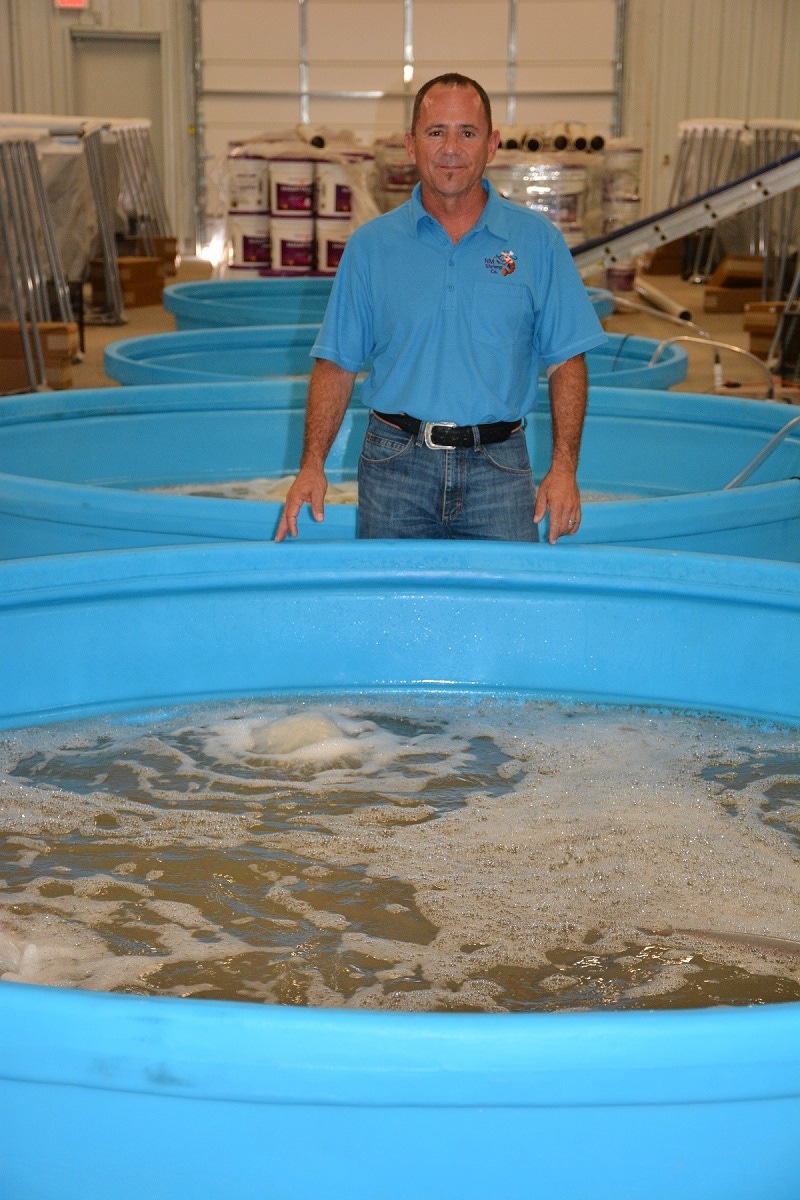
Las Cruces, N.M., probably wouldn’t make the list of the places you’d most likely go for fresh shrimp. But if you’re in town on the right day and get in line early enough, you might get some fresh seafood to go with those tasty New Mexico chile peppers.
To make matters more interesting, the shrimp have been locally raised, from near microscopic size to jumbos, on a diet based largely on cottonseed.
“We usually sell out in a few hours,” says Tracey Carrillo, owner of New Mexico Shrimp Company, and assistant director and senior program manager for the New Mexico State University Agricultural Experiment Station. In the latter capacity, Carrillo has more than 20 years of experience in cotton, and is currently working with a Cotton Incorporated research project examining potential for increasing the value of cottonseed.
Why not cottonseed as fish food? “Cottonseed has been of little value — about $300 a ton,” Carrillo says. “Most cottonseed from this area goes to dairies as crushed feed.”
Use in a more intensive animal feeding regimen, shrimp for instance, has been limited because of gossypol, a toxic material in cottonseed that has been the focus of various research efforts going back 30 or 40 years. “The time is right,” Carrillo says. Interest in aquaculture, as well as in other value-added uses for cottonseed, is a catalyst.
HIGH IN PROTEIN
Cottonseed from several glandless varieties (without gossypol in the seed) may provide as much as 52 percent protein, and can be attractive to land-based seafood production.
Fish meal, the typical feed for farm-raised shrimp, costs in the neighborhood of $2,500 a ton, Carillo says, while cottonseed at $300 a ton can offer a cost-saving alternative, if productivity measures up.
He has been studying that possibility for several years, and the results convinced him that a Las Cruces farm-raised shrimp industry could be viable. He and a partner developed the New Mexico Shrimp Company, where Carrillo continues to study the potential and evaluate the economics of land-based shrimp production, using cottonseed . The cottonseed is made into a meal and that meal is then used to replace fishmeal in aquaculture feed.
He’s moved from a small facility, with just four pools, to a larger building with 11 large tanks and several smaller ones, where tiny shrimp are brought for their first few weeks. And he has room to expand. Computer programs analyze feed efficiency, water quality, and growth rate. “We have the whole gamut of research disciplines involved,” he says. That includes engineers, food scientists, breeders, and cotton specialists.
“It took three years to learn how to grow shrimp — now, we’re continually tweaking the system.” But the economics don’t add up yet, he says. “It’s costing about $8 per pound to grow shrimp, and that’s not good enough to compete with foreign imports, even though we have been selling shrimp for $15 a pound.”
Following feeding trials, they sold the grown shrimp to the public. People lined up to buy them, and some left disappointed when they were sold out.
ADDITIONAL DEMAND
“We need demand in order to grow,” Carrillo says. “With the new facility, we can produce 12,000 pounds of shrimp a year. A local restaurant can use 200 pounds per week — at that rate, we need nine restaurants as customers.”
The shrimp company is a private business, he explains, but with ties to New Mexico State University. He worked through a university development office to set up the business. “The University will get a percentage from the business, and the agricultural experiment station will get a percentage,” he says. “It’s a way to help commercialize research.”
He sees opportunity in shrimp. “Feed and utilities are the biggest expenses. We can reduce utility costs by improving energy efficiency.” Cottonseed as the basis for feed rations offers an opportunity to reduce production costs even more, he says, especially considering the $2,500 per ton cost of fish meal.
A crucial aspect of the program has been cotton varieties without gossypol in the seed, Carrillo says. Texas A&M researchers were able to insert a gene into cotton so the plant expressed gossypol but the seed did not.
He says the opportunity to add value to cotton through a more robust market for cottonseed will be a boost to an industry that has seen hard times recently. “Yield and quality are good with these cotton varieties, and thus far we’ve seen no significant insect damage.”
OTHER USES
Through the Cotton Incorporated research he’s looking at other uses for cottonseed, including converting cottonseed oil from food preparation into biodiesel. “We provide cottonseed oil to food service businesses and recover the waste and make biodiesel,” he explains. “We can process 50 gallons of biodiesel in 48 hours. We also get glycerin in the process, which students are using to make soap.”
It’s a sustainable system, he says. “We grow the cotton, get oil from the seed for food use, then take the waste and make biodiesel.”
They are also looking at food uses, such as a chip-type snack that resembles Cheetos, “but doesn’t leave your fingers orange.” Other products include rubs, garnishes, flavored oils, and whole-kernel snacks that resemble sunflower seeds. The potential exists, Carrillo says, to turn cottonseed into high value products.
The shrimp facility qualifies as a sustainable project, he says. “We have zero water waste — we use the water over and over. The water is also high in nitrogen and phosphorus, so we can use it in a greenhouse near our facility.”
About the Author(s)
You May Also Like






